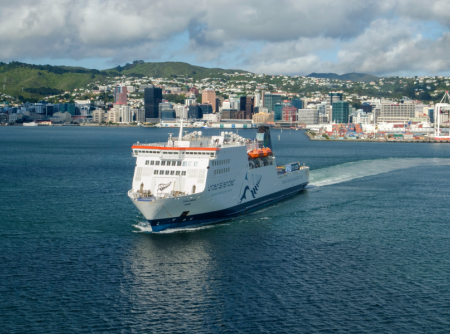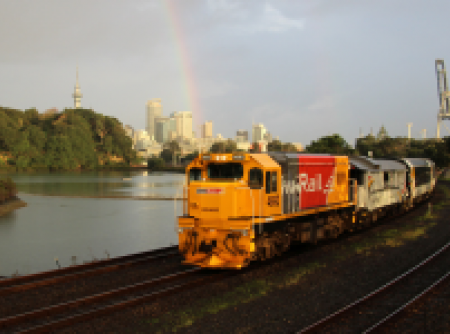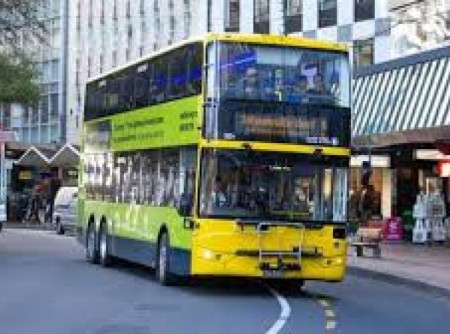Auckland Transport Consultancy - Supermaxx
The way ahead for Auckland's public transport including City Rail Link opening.
Prepared July 2025.
Supermaxx is an effective, low cost, affordable, integrated, fast public transport system from Wellsford to Waiuku which could be introduced within 6 months for around $1 million dollars using current, trains, buses, and ferries
AUCKLAND TRANSPORT HAVE DONE IT AGAIN. The 2025/2026 budget is now settled
AT have INCREASED Public Transport operating expenses to $1,049,800,000. (Over $1 billion dollars for the first time)! Up from $975 Million 2024/2025.
AT have modestly increased Public transport budgeted fare revenue to $215.7 million (from $208.4 Million) - an $834,134,188 shortfall made up of subsidies of $399 million from NZTA, $363.8 from Auckland Council and $71.3 from 'other'. Fare capture is budgeted to be about 20% of expenses - one of the worst in the world.
SUPERMAXX - Projected revenue with 200,000 adult passengers plus concessions = $246,737,000. AT fare capture $215.7 million. $31,037,000 more revenue with Supermaxx fares 50-66% lower than AT by using unlimited travel passes and with no increase in patronage.!!! Fare capture with Supermaxx increases by $77 million per annum for every extra 100,000 users.
Supermaxx have just DECREASED fare levels to $70 for 30 day and $20 for 10 day (from $75 and $25 respectively) unlimited travel passes for projected revenue of $246,737,000 ($31,037,000 more than AT) which combined with savings from less buses on better networks provides annual savings of $268,566,000 in subsidies required from NZTA and Auckland Council when taking $71.3 million 'other' revenue for AT Passenger Transport.
With fares for most commuters reduced by 50 - 66% and a faster, more frequent, and better connected network it is reasonable to expect at least a 50% increase in adult patronage to 300,000 regular users providing total savings in subsidy of $268,566,000 per annum ($5,164,730 per week) - see calculations below.
Features
** Saving at least $5 million dollars per week in operating subsidies
* * Dramatically lower fares for commuters with 30 day ($70), 7 day ($20), 1 day (10), and 2 hour ($2) unlimited travel passes Wellsford to Waiuku all buses, trains, and ferries (except Gulf Harbour and Waiheke where $20 per journey surcharge applies).
Plus
* * Carbon Emissions reduced by at least 31,500 tons per annum
** Express, Primary, Standard, Local, and Regional services
** 22 Primary routes providing services, every 10 minutes, 7am – 7pm monday- saturday, 5 minutes at peak times, 20 minutes off peak, hourly 1am - 5am on main routes plus 26 Standard routes, plus Local, and Minimaxx shared ride service.
** All services start and end at shopping,working, and entertainment hubs
** Supermaxx needs 350 less buses but provides more capacity
** Supermaxx integrates into City Rail Link at Britomart, Te Waihorotiu, and Karanga-a-hape stations
** Supermaxx passes will encourage Aucklanders and tourists to explore and enjoy all of the Supercity and contribute to local economies from Matakana and Kawau Island to Glenbrook Railway and Waiuku.
----------------------------------------------------------------------------------------------------------------------------------------------------------------
SUPERMAXX FARES
.............................Adult.................... Concession
30 days ................. $70 .......................... $30
7 days.................... $20........................... $10
1 day...................... $10........................... $5
2 hours*................ $2 ............................ $1
* From first to last boarding
Supermaxx Subsidy Savings – at least $268 million per year
What is Supermaxx ?
For effective, affordable, 'transport of choice' public transport must be
FAST: Bus lanes on main roads and motorways. Priority at traffic lights. Express services between transport hubs using motorways. Most direct and fastest route possible
FREQUENT: Services at least every 10 minutes on primary routes (5 minutes at peak times) and 20 minutes on secondary routes
REGULAR: 10 minutes apart means 10 minutes apart
INTEGRATED: Buses and trains co-ordinated with minimal connecting times at hubs and one unlimited travel pass fare
COMPREHENSIVE: Supercity wide coverage including every major entertainment, shopping, residential, and employment centre including airport.
FLEXIBLE: Easy and free interchange between buses, trains, and ferries
COMFORTABLE: Air conditioned – modern – clean – quiet – fast - free wi-fi
AFFORDABLE: Lowest possible cost – more economical than private car
SUPERMAXX FULFILLS ALL THE ABOVE
** It will save at least $5 million per week in operating subsidies
** It will reduce most commuters fares by at least 50%
** It will provide vastly improved services at greatly reduced costs
** It provides integrated public transport from Wellsford to Waiuku
** It provides 24 hour services on most primary routes
** It will massively reduce road congestion as commuters transfer to Supermaxx
** Undercover, camera monitored, cycle storage at all hubs
Over 90% of residents within the urban area bounded by Orewa, Westgate, Papakura, and Cockle Bay will be within a 10 minute walk of a SUPERMAXX service, most within a 5 minute walk
Combined with MINIMAXX shared ride non subsidised services from transport hubs (extra cost $2 per ride) door to door public transport will be available in the main urban area for the first time.
At present there is enormous waste of ratepayers money through inefficient use of capital and human resources. There is a huge excess of noise, emissions, and congestion and the services are not as user friendly and attractive as they should be through extremely inefficient network planning.
Example:
Most Dominion Rd services (one of the busiest routes in the city) travel along Mt Eden Road, Esplanade Road,, and View Road, to Dominion Road. For the sake of a few passengers who use Esplanade and View Road bus stops (all of which are within 5 minutes walk of Mt Eden or Dominion Road bus stops) thousands travelling daily further down Dominion Road have 5-10 minutes added to their journey. Some Dominion Road buses (25L) finish in Lynfield, some (25B) finish in Blockhouse Bay. Both are important dormitory suburbs, but are not destinations other than for residents.Both routes travel together to Denbigh Avenue. Frequently 2 double deck buses travel in tandem with maybe 5-10 passengers on each during the day between Denbigh Avenue and the city. Crazy!.
The same wastage is replicated on Manukau Rd services 30 and 309. It wastes time, money, fuel, capital and human resources and causes pollution and congestion.
SUPERMAXX has one primary Dominion Rd route (209) which starts opposite the Civic Theatre (as at present), and travels via Airedale, Upper Symonds, and New North Rd (Maungawhau station) to Dominion Road servicing both Lynfield and Blockhouse Bay and finishing at New Lynn Transport Centre – a major connecting point to the north and west. With the increase in patronage expected we will probably be able to introduce express buses at peak times from Civic Theatre via Upper Queen St and Ian McKinnon Drive with stops at Valley Rd, Balmoral Rd, and Mt Albert Rd, Lynfield, and Blockhouse Bay only.
Frequently Asked Questions
Has Supermaxx been reviewed?
YES. Supermaxx has been reviewed by some leading international transport experts with years of experience in developing transport theory and systems around the world.
Some of their comments;
“The principle of an integrated and simplified transfer network with a limited number of high frequency services makes sense and is in line with European best practice guidelines, including the so called Hi Trans guide on bus service design written by Gustav-Neilson and Truls Lange”.
A paper by Graham Currie and Ian Wallis in the Journal of Transport geography Vol 16, 2008 shows that service simplification delivers the greatest of several subsidy saving initiatives, namely $3.50 in subsidy saved for every $1 spent on additional services to produce a network effect.
Why unlimited travel passes instead of zonal or distance fares?
Unlimited travel passes provide a huge incentive over zonal or distance fares. The thought “I have paid for the pass and therefore may as well use it” is a greater incentive to use public transport than “this journey is going to cost me money, so I may as well use the car.”
Unlimited travel passes are vastly more economical to operate. Auckland Transport have paid over $100 million for the current integrated Ticketing contract.NZTA are trying to implement an even more expensice nation wide ssytem. Supermaxx Passes can be easily adjusted to work in any city with contracted public transport service throughout the country. Step off a plane at any airport and with 1 Supermaxx Pass you can be heading for the city for $2 fare - or included if your 1, 7, or 30 day pass is valid.
A system for 'SUPERMAXX” would have cost less than $10 million to implement in Auckland - a bit more Nationwide.
What about Park and Ride facilities?
The introduction of Supermaxx with its network of local services feeding transport hubs, and unlimited travel passes will minimise the need for Park and Ride however they will be available for those who wish to use them for a cost of $5 per day with free electric car charging facilities provided. Park and Ride facilities can be provided at most transport hubs at no cost to Auckland Transport and Auckland Council by offering the air space above to developers free of charge for office or apartment blocks with 2-3 lower levels of car parking vested in Auckland Council for Park and Ride. “Kiss and ride” drop off and pick up space will be provided where possible.
Current Park and Ride facilities waste a large amount of valuable space.
Undercover camera monitored cycle storage will be provided at all transport hubs.
Will Supermaxx be attractive to tourists?
YES. The $2 for 2 hours travel (timed from first to last boarding), $10 one day passes, and $20 seven day passes will be very attractive to tourists. A $2 fare from the airport will make us world leaders and the word will soon spread that we are one of the best 'value for money' cities in the world. The simplicity of the Supermaxx integrated network and schedules and frequency of services will enable tourists to travel around the city and visit virtually all our tourist attactions and main shopping centres from Matakana in the north, to Waiuku and Glenbrook Railway in the south. One simple timetable will cover all services for ease of planning.
Why do Waiheke and Gulf Harbour ferries have a surcharge?
Ferries are much more expensive to purchase and operate and are far less flexible in deployment than buses. A $20 surcharge per journey is reasonable. It is also a demand mitigation measure to limit demand on a sunny summer day!
Does cycling play a part in SUPERMAXX?
YES. Cycling has a very important part to play in our transport system but not in long distance commutes on our hilly terrain and overcrowded roads. All rail stations and most bus hubs will have weather protected, camera monitored, cycle storage facilities free.
Can “SUPERMAXX” be implemented citywide within 6 months?
YES. It is perfectly feasible technically – 2 months to refine the schedules, 2 months in the public domain for comment, and 2 months to finalise, publicise, and implement. It could be done in 3 months with goodwill from all parties involved.
Supermaxx Budget 2025/2026
This example assumes patronage remains much the same as at present with a slight increase in adults to 200,000 regular users.
REVENUE
30 day passes
Adult .......................200,000 x $70 x 11 months.............. 154,000,000
Concession ..............80,000 x $20,x10 months............... 16,000,000
Senior Passes .......199,600 x $0 x 12 months ............... 23,952,000
7 day passes
Adult .......................10,000 x $20 x 52 weeks ..................10,400,000
Concession ..............5,000 x $10 x 52 weeks ....................2,600,000
1 day passes
Adult .......................8,000 x $10 x 365 days ....................29,200,000
Concession.............3,000 x $5 x 365 days ........................5,475,000
2 hour passes
Adult ..................... 6,000 x $2 x 365 days ........................4,380,000
Concession .......... 2,000 x $1 x 365 days ...........................730,000
Total projected revenue with 200,000 adult users ....246,737,000
Operating Costs - Supermaxx
(same as for AT for rail and ferries. 350 less buses needed! I believe we can get much better contracted prices for buses which wilkl reduce costs further.
Rail As for Auckland Transport .............................................329,200,000
Bus 1,000 buses x $398,571............................................... 398,571,000
Ferry As for AT .......................................................................84,500,000
Total Supermaxx operating expenses ............................ 812,271,000
Less fare capture ............................................................. 246,737,000
Less 'other' receipts for advertising etc 71,300,000
Total subsidies required for Supermaxx ....................... 494,234,000
Auckland Transport
Operating expenses budget 2025/2026 ....................................1,049,800,000
Less projected fare capture 215,700,00 + 71.300,000 'other...... 287,000,000
Total subsidies needed for Auckland Transport .........................762,800,000
SUBSIDY SAVINGS USING SUPERMAXX ....................................268,566,000 per year = $5,164,730 per week
With a highly developed much more integrated and frequent network and fares halved for most commuters it is reasonable to assume at least a 50% increase in patronage. For every extra 100,000 adult users subsidy savings increase by $77 million per annum
For every extra 521 adult passes sold for 11 months 1 extra bus can be fully funded or 2 buses part funded
Supermaxx/AT Comparisons
( All AT costs based on average of 21 days (42 trips) use per month with weekly cap of $50)
Supermaxx costs provide unlimited travel for 30, 7, 0r 1 consecutive days
....................................................................................AT...............Supermaxx ...........Save!
Monthly with $50 per week fare cap........................ $210 .....................$70............... $140
7 day Pass..................................................................N.A..................... $20
1 day Pass ..............................................................$20 ........................$10................ $10
2 hour pass (First to last boarding)........................... N.A...................... $2
.......................................................................AT Hop (cash 1 journey) ...Supermaxx........Save!
1 zone x $2.20 x 2 x 21 .....................................$92, 40.........($4) ..................$70.......... .$ 22.40
2 zones x $3.90 x 2 x 21.................................. $163. 80 ........($6) .................$70 .......... $ 93.80
3 zones x $5.40 x 2 x 21...................................$226.80......... ($8) .................$70......... $150.80
4 zones x $6.80 x 2 x 21 .................................$285.60.......... ($10).............. $70......... $215.00
5 zones x $8.00 x 2 x 21 .................................$336.00.......... ($11.50) .........$70.......... $266.00
AT Hop fares – 6 zones $9,20. & zones $10.40, 8 zones $11.60. 9 zones $
Above 4 zones the AT maximum $50 per week fare cap is cheaper
Supermaxx 1 day Unlimited Travel Pass $10............ 2 hour pass for up to 2 hours from first to last boarding.$2
SUPERMAXX provides more revenue by using unlimited travel passes, reducing commuter costs from an average $210 a month (with $50 per week fare cap) for AT to $70 per month for Supermaxx, reducing operating costs by creating a better and more efficient network, and takes at least 31,000 tons of carbon from the air each year. Please do the math and check it out, and then explain why it is not introduced.
LOWER FARES ARE CRITICAL IN THESE FINANCIALLY DIFFICULT TIMES FOR MANY STRUGGLING COMMUTERS. AT does not need more subsidies - it needs less. Supermaxx can be introduced across Auckland within 6 months for a cost of around $1 million and will bring savings of at least $5 million per week in operating subsidies when fully implemented. Supermaxx needs a critical mass of around 200,000 people to fully implement the frequency, network, and fare level but Wellington and Christchurch qualify as well as Auckland and a modified version can be implemented in smaller cities. With the agreement of the councils (and introduction of unlimited travel passes) one pass could cover every public transport service in New Zealand with huge benefits to the public. Step off the plane at any airport and you are on your way on local bus services using the same pass. Auckland Transport, Auckland Council, and the Government cannot understand the concept of lower fares, lower costs, and better services actually increasing revenue!
Approximately 160,000 adults (adult Hop Card users only counted) use public transport on an average weekday according to Auckland Transport. By reducing fares by 50-60% and providing much better, faster, more frequent, and more integrated services Supermaxx patronage will increase dramatically. 300,000 is a conservative estimate from the 1 million adults in Auckland under 65. By refining the network 20% more capacity can be provided with 350 less buses saving a further $139,499,850
AT Budget for operating costs 2021/2022 ...........................627,000,000
AT Budget for operating costs 2023/2024 ...........................837,100,000
AT Budget for operating costs 2024/2025............................975,000,000
AT Budget for operating costs 2025/2026 ........................1,049,800,000
Auckland Transport Budget for fare revenue .......... 2024/2025........... 208,400,000
Auckland Transport Budget for fare revenue.......... 2025/2026.......... 215,700,000
Auckland Transport has INCREASED TOTAL SUBSIDIES required from Auckland Council and NZTA for public transport between 2019/2020 ($328,000,000), 2023/2024 ($674,700,000), 2024/2025 ($716,000,000)
Subsidies budgeted 2025/2026
Auckland Council ................. 363,800,000
NZTA....................................... 399.000.000
Total subsidies....................... 762,800,000
Budget for fare revenue 2025/2026 just $215,700,00
Operating expenditure per passenger is $8.89 funded by passenger $2.32, NZTA $3.65, Auckland Council $2.91. (2024/2025)
-----------------------------------------------------------------------------------------------------------------------------------------------------------
SUPERMAXX SAVINGS WITH 300,000 REGULAR ADULT USERS 2025/2026
Buses in service at AT 15 May, 2024 1346 including 1014 Diesel single deck, 194 diesel double deck, 1 electric double deck
(To be added to fleet 60 single deck electric. 23 double deck electric)
($435,774,000) divided by 1346 buses - average cost per bus per annum $419,762
OPERATING COSTS BUDGET
2021/2022 2023/2024 2024/2025...............2026/2027
|
Rail 189,000,000 227,731,000 297,100,000.............329,200,000
Bus 376,000,000 479,407,000 522,100,000.............558,700,000
|
|
|
|
Ferry 14,000,000 67,414,000 79,700,000............ 84,500,000
Other costs 62,605,000 76,100,000............ 77,400,000
|
|
|
| Total 627,000,000 837,157,000 975,000,000..............1,049,800 |
|
|
| |
|
|
| OPERATING REVENUE (Millions) (AT) (2021/22 figures include NZTA and AC subsidies) |
|
|
|
2021/2022 2023/2024 2024/2025 .................2025/2026
|
|
|
Rail 64,000,000 227,783,000 297,100,000 ....................
Bus 141,000,000 479,834,000 522,000,000
| Ferry 13,000,000 66,371,000 79,700,000 |
|
|
Other 76,100,000
Totals 218,000,000 497,964,000 974,900,000
|
|
| |
|
More info
(
7 MB)

 back to Public Transport
back to Public Transport 

